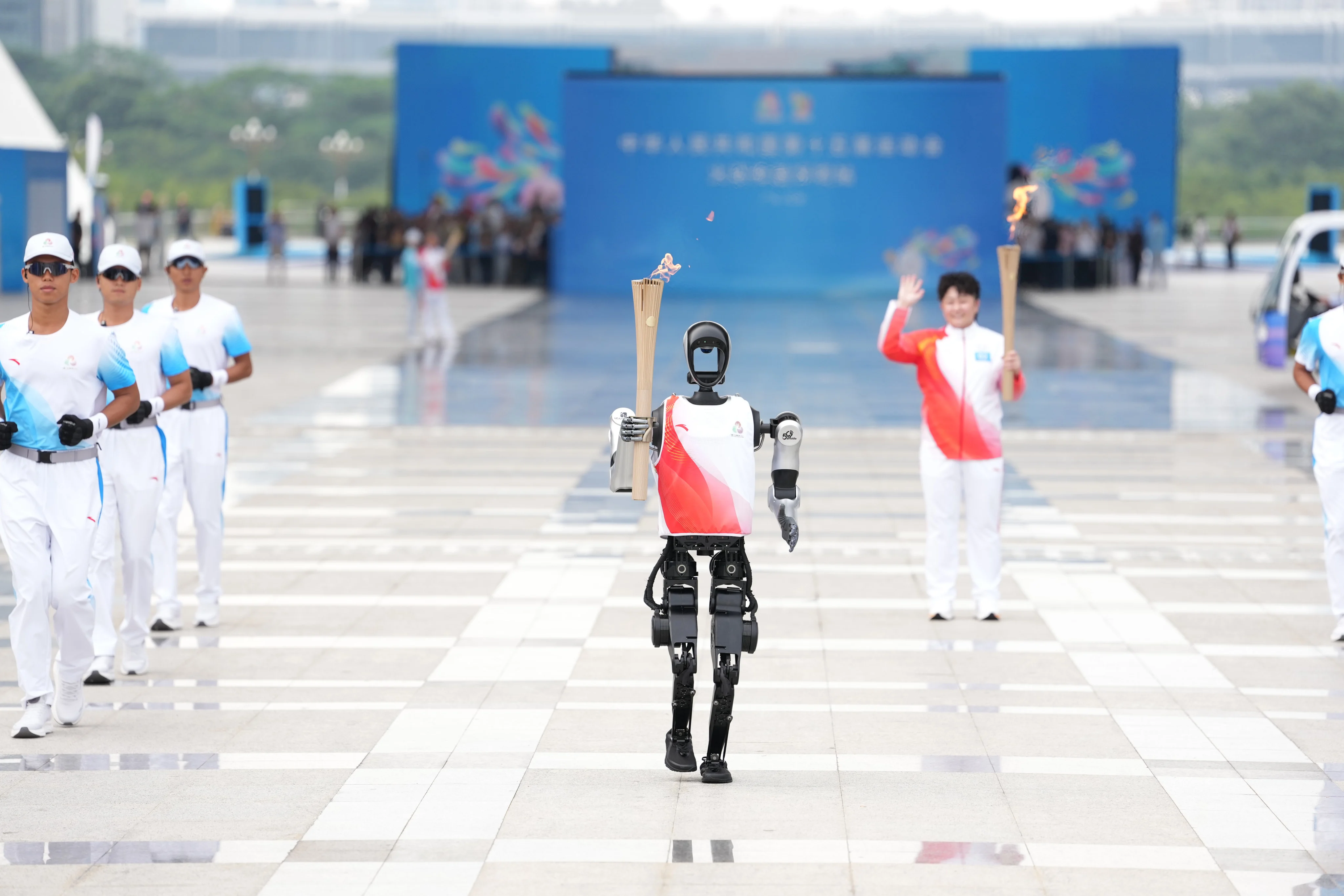Copyright scmp

In a world first, China has taken further strides in showcasing its prowess in robotics and artificial intelligence after a humanoid robot completed a torch relay segment with lifelike running movements. The 1.47-metre-tall biped, named Kuavo, ran about 100 metres while holding a 1.6kg torch in its right hand. It received the flame from retired badminton champion Yu Yang at Shenzhen’s Civic Centre on Sunday and passed it to the next runner, Wang Yuning, a local high school student with a passion for rocket science. The event formed part of the 2025 National Games torch relay, which spans Guangzhou, Shenzhen, Hong Kong and Macau, and features 200 participants drawn from sports, education and technology circles. While this was not the first time robots have joined a games relay, none of the previous displays could hold a torch to Kuavo. A bipedal machine featured at the 2018 Winter Olympics in South Korea’s Pyeongchang, but its role was largely a controlled demonstration – walking briefly and cutting through a wall on cue. Robots were showcased at the Tokyo 2021 Olympic relay and the Beijing 2022 Winter Olympics – the first using a wheeled design and the second an underwater model – however, neither matched Kuavo’s advanced autonomy, stability or motion control. Kuavo was developed by Shenzhen-based start-up Leju Robot, part of a new generation of Chinese firms pushing humanoid design towards real-world application. Leju chief executive Chang Lin told state broadcaster CCTV that the robot relied on the 5G-Advanced network for communication during the relay and ran fully autonomously, with no human operator nearby. Leju vice-president Ke Zhendong said engineers had fine-tuned the robot’s load-balancing algorithm to keep its centre of gravity stable during running, counteracting the extra weight of the torch, according to the 21st Century Business Herald newspaper. The company is now preparing for an initial public offering (IPO) on a mainland stock exchange, with Orient Securities acting as its adviser. It aims to complete its listing preparations by June 2026, according to a filing with regulators. Its move follows that of industry leader Unitree Robotics, which plans to file IPO documents by the end of this year. Last week, Unitree founder Wang Xingxing and AgiBot co-founder Peng Zhihui joined an advisory board of the Shanghai Stock Exchange, underscoring Beijing’s growing interest in nurturing its domestic robotics champions. China’s robotics industry has been extending its reach into sports. In September, Beijing hosted the inaugural World Humanoid Robot Games, attracting 280 teams from 16 countries to compete in 26 events from sprinting to gymnastics and football. Earlier this year, the capital also staged the world’s first half-marathon featuring humanoid robot participants.



